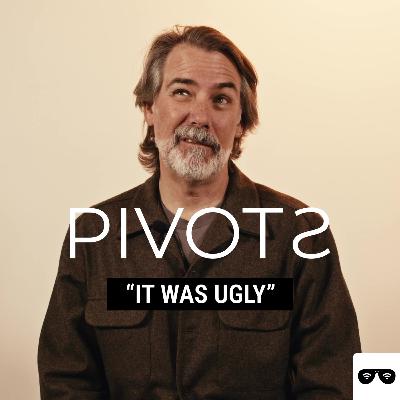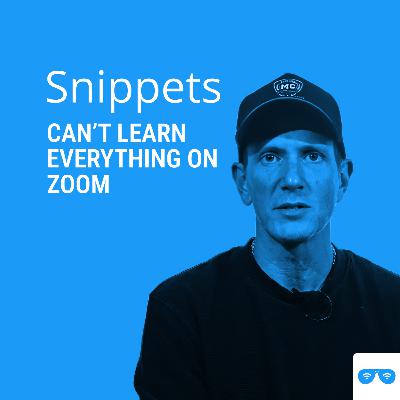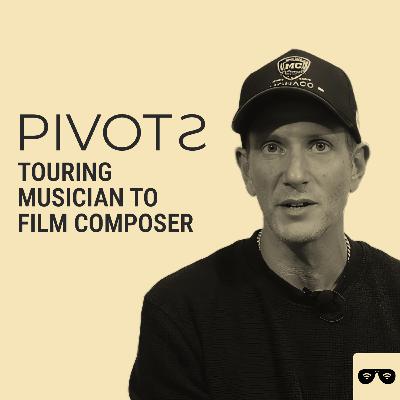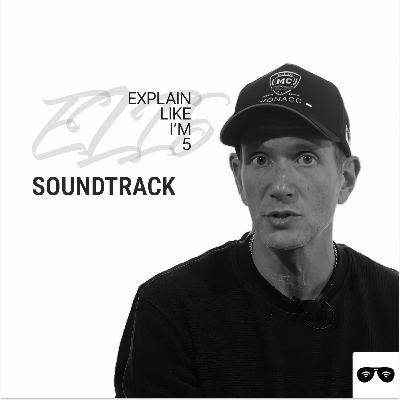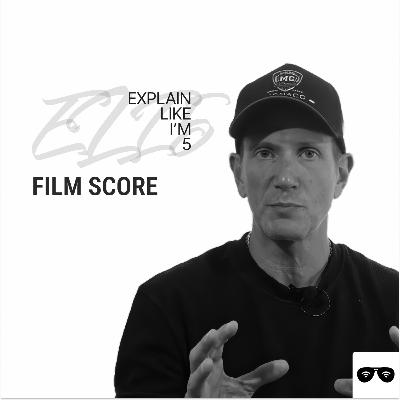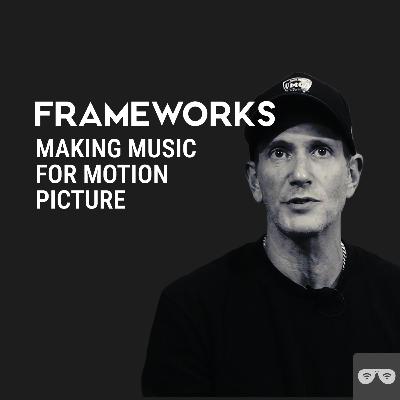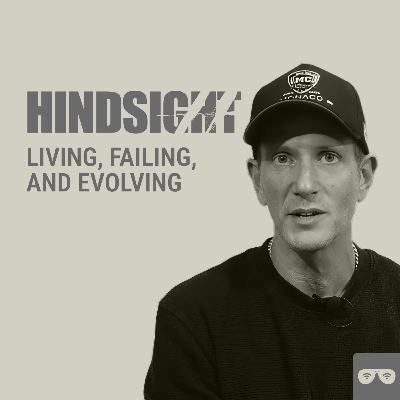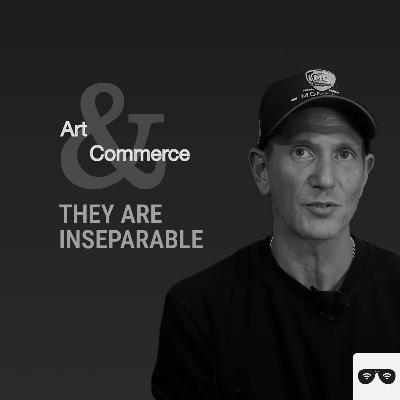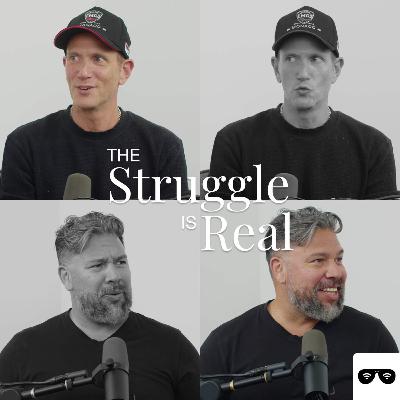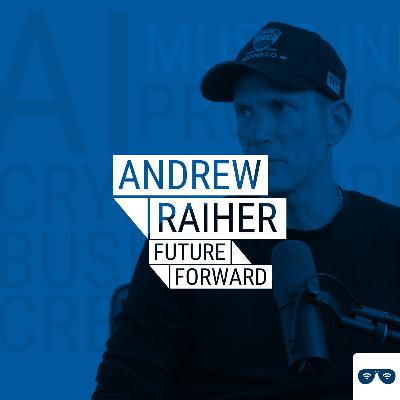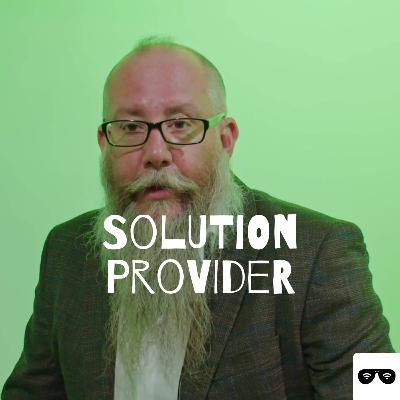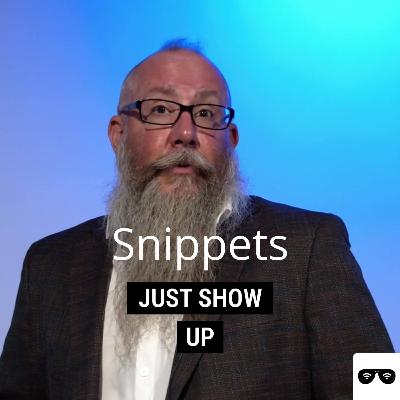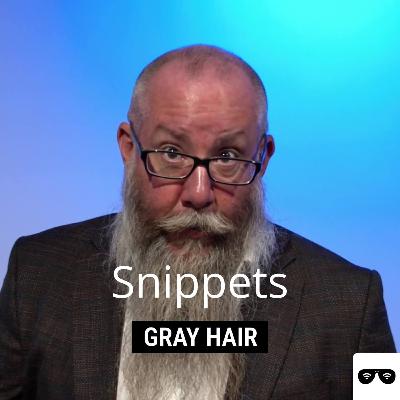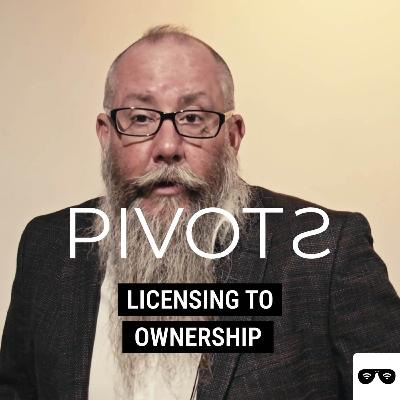Discover indexRGB
indexRGB

170 Episodes
Reverse
Alex Palatnick shares a high-stakes story of a critical system failure at 51 Mines and the tough pivot his team had to make to recover. When an ISIS array started acting up, the solution required a full deletion and rebuild—an intense decision that had the entire team working tirelessly to restore operations within 72 hours. Alex reflects on the challenges, the importance of quick decision-making, and the lessons learned from navigating technical crises.Key Topics:The unexpected failure of an ISIS array and its impactHow the engineering team assessed the situationThe critical decision to delete and rebuild the systemThe importance of backing up data on LTOThe recovery process and lessons from the experienceQuotes:"The Pivot was as simple as making the decision—delete the array, bring it back up again, and start restoring everything.""Everybody was back working again within 72 hours, but it was ugly. Ugly. Wasn't any fun.""We took a real hard look at it, made sure all the media was backed up, and pulled the trigger on the fix."See more https://www.indexrgb.com/#TechRecovery #CrisisManagement #PivotAndRestore
Andrew Raiher urges everyone to learn CPR, sharing how essential it is to be prepared in an emergency. He stresses that even basic knowledge can make the difference between life and death. His initiative, Project BAM, offers free CPR training to empower people to act when it matters most.Key TopicsWhy everyone should learn CPRThe panic and guilt of not knowing lifesaving skillsThe basics of CPR take only 30 minutes to learnProject BAM’s mission to provide free trainingHow being prepared can save livesQuotes“Be the person in the room who knows how to perform competent lifesaving CPR.”“If you find yourself in a room where you need to save someone’s life and don’t have that knowledge, the panic is terrible.”“To know that you did what you could is all you can do — and it only takes about half an hour to learn.”“Get in touch with Project BAM. We will train you for free.”
Andrew Raiher emphasizes that real learning happens in person, not virtually. He believes energy and presence are essential to absorbing skills, and that true growth comes from being alongside someone brilliant, emulating them, and then developing your own version.Key TopicsWhy in-person learning is irreplaceableThe limits of remote/virtual tools like ZoomThe role of energy and presence in mentorshipHow emulation leads to personal growthWhy direct human connection drives deeper learningQuotes“If you wanna learn something, learn it from someone.”“Be in someone’s presence — that’s when you do the learning.”“This is not remote, this is not virtual, it’s not happening in Zoom.”“Only they can show you their energy when they’re doing the thing they’re brilliant at.”
Andrew Raiher emphasizes the importance of taking control of your algorithm instead of letting it control you. By curating your digital inputs, opposing what you don’t want, and focusing on what you do, you can build an algorithm that reflects your taste and brings joy.Key TopicsWhy algorithms are valuable in 2025Training your algorithm vs. being trained by itCurating your feed by rejecting unwanted contentThe joy of building an algorithm that reflects youWhy personalization is digital powerQuotes“Train your algorithm. Don’t let it train you.”“Your algorithm is the most valuable thing you have in 2025.”“The goal is to make other people jealous of the brilliance of your algorithm.”“Make your algorithm your own — treat it with love.”
In this candid reflection, Andrew Raiher explains how a life on tour pushed him to pivot into film and television scoring. What started as a desperate shift to protect his health became a career-defining move. Today, with more than 40 films to his name, Raiher’s story is a reminder that the scariest pivots often lead to the most meaningful growth.Key TopicsWhy Andrew Raiher had to leave touring behindThe role of health in driving career decisionsTaking the leap into film and TV scoringHow friends and opportunity shape pivotal momentsGrowth through risk and reinventionQuotes“I realized that if I didn’t pivot within a year, I’d have no liver.”“It was the most terrifying pivot of my life.”“And now, about 40 movies later, I pivoted.”
Andrew Raiher explains the dos and don’ts of English swearing, highlighting the cultural differences between the UK, Australia, and the U.S. He emphasizes that certain words carry far more weight than Americans might realize, and using them improperly can lead to real offense — or even a fight.Key Topics • Proper use of “bloody” in English slang • The cultural weight of certain swear words in the UK • Differences between English, American, and Australian usage • Why context matters when swearing • How misusing slang can offend or escalateQuotes • “When you use bloody, you have to use it in the right way — it’s a descriptor.” • “A woman can never, ever be called that word in any circumstances.” • “It’s fighting talk. You can’t use that word unless you’re ready to break a glass and have a real fight.” • “Americans don’t really understand the weight of it — and you’ve got to stop using the T.
Andrew Raiher breaks down the often-overlooked jargon of film scoring. He explains the role of music cues — bespoke compositions tied to moments in a production — and reference tracks, which guide and inspire composers as they craft new music. This candid explanation reveals the hidden processes that shape how film and TV music comes to life.Key TopicsWhat a music cue is in film scoringHow ref tracks guide composersThe hidden jargon of film music productionWhy audiences rarely notice these processesBehind-the-scenes look at how music shapes film storytellingQuotes“A cue is each separate piece of bespoke, custom-made music.”“When you’re working on something, you’ll often be given a ref track — a reference track to inspire what you’re tasked to write.”“It’s inside baseball. No one else in the world would know that process occurs.”
Andrew Raiher reflects on the power of slang in shaping culture. With terms like “mid,” “fire,” “tough,” “cooked,” and “riz” now dominating conversations, he shows how language is constantly evolving and generationally driven. Sometimes, understanding slang is less about knowing exact definitions and more about recognizing the cultural context.Key Topics • Popular slang terms: mid, fire, tough, cooked, riz • How slang evolves through younger generations • The cultural role of slang in communication • Why definitions are often fluid and left to interpretationQuotes • “Mid, fire, tough, cooked, riz — those are at the top of the slang list.” • “Thank you to my kid and all his friends to make this dream a reality.” • “No, I don’t have to explain what those mean. It’s the internet.”
Andrew Raiher explains that a soundtrack includes all the music in a film or TV show — original score plus licensed songs — while a score refers only to the custom music written for that production. He also highlights how soundtrack albums don’t always match what viewers expect, as they often exclude the score.Key TopicsWhat a soundtrack isThe difference between soundtrack and scoreHow source music and composed score work togetherWhy soundtrack albums sometimes exclude scoreExamples like Reservoir DogsQuotes“A soundtrack is all the music in a movie or TV show — both the custom score and the pre-existing songs.”“A score is only the music created from scratch by the composer.”“Soundtrack albums often don’t have score — especially in the ‘90s when movies relied on big song placements.”
Andrew Raiher clarifies a common misconception: the difference between a score and source music. A score is original music composed for a film or TV production, while source music is preexisting and licensed. His simple explanation highlights how music supports storytelling in very different ways.Key TopicsWhat a film score isDifference between score and source musicWhy people confuse scores with popular songs in filmsThe role of music in storytellingQuotes“A score is music that is made especially for a production, a TV show, or a movie.”“That Celine Dion song you loved? That’s not score, that’s source music.”“Score is music created from scratch to go specifically with a piece of motion picture.”
Andrew Raiher discusses the role of temp music in film production and how it shapes the creative process for composers. While temp tracks guide filmmakers, they also create bias and limit imagination. Raiher highlights the skill of proposing bold ideas without undermining the director’s vision, describing the constant push-and-pull between artistic risk and professional survival.Key TopicsThe framework of temp music in film scoringThe problem of “temp love” in filmmakingBalancing creativity with production expectationsThe push-and-pull between artistic risk and job securityHow to break past preconceived ideas to bring something newQuotes“One of the tasks is to not get stuck in temp music, because oftentimes filmmakers have ‘temp love.’”“For me, the fun is looking at it and going, how can I really blow this open?”“It’s a push and pull — pushing the creative envelope without upsetting the production and losing the job.”“They look at you like, why are you messing with my baby? And I’m like, because I think your baby could have a really cool outfit.”
Andrew Raiher reveals the methodical frameworks behind his creative process. Though he thrives on experimentation and bold artistic choices, he organizes projects into modular, bite-sized chunks — a habit influenced by the traditional reel system of film scoring. For Raiher, structure and creativity are not opposites; they fuel each other.Key TopicsWhy structure is essential for creativityModular planning and chunking large projectsThe influence of film and TV scoring workflowsHow old reel-based systems shaped creative processesBalancing experimental art with commercial constraintsQuotes“I try to make insane things, but I’m very structured in my process.”“If anything can be organized, I will organize it.”“Structure creates the space for me to be as expansive creatively as I possibly can.”“Chunking a large project into manageable pieces is the key to surviving long timelines.”
Andrew Raiher rejects the idea of hindsight as useful or even real. He believes that transformation and growth come only from the process of living, failing, and evolving — not from wishing we knew then what we know now. For him, hindsight isn’t wisdom, it’s an illusion.Key TopicsWhy Andrew Raiher believes hindsight doesn’t existGrowth through transformation and experienceThe futility of wishing things were differentLooking back fondly vs. regretQuotes“There’s nothing that I know now that I would’ve wanted to know then.”“Hindsight’s 2020 is nonsense — it doesn’t exist.”“Who I was is not who I am now, and without that transformation it just wouldn’t have been the same.”
Andrew Raiher emphasizes that art and commerce are inextricably linked. While artists may resist thinking about business, he believes ignoring commerce can undermine the ability to create. This segment highlights the importance of integrating artistic vision with business awareness to thrive as a creative professional.Key TopicsThe relationship between art and commerceWhy creativity alone isn’t enoughHow ignoring business can limit an artist’s successThe need to balance passion with practicalityQuotes“Art and commerce are inextricably linked — you cannot have one without the other.”“If you miss the commerce piece, the world will remind you that you should not have missed it.”
Andrew Raiher reflects on the lifelong gamble of making art his career, the self-discipline it requires, and the constant need to adapt. He describes how the sudden death of his close friend, athlete and stuntman Brian “BAM” Markle, deeply shook him — and how singing through his grief helped him find a path back toward normalcy. Raiher’s experience led to the creation of Project BAM, an initiative to expand CPR training and AED availability in sports and public spaces.Key TopicsThe reality of living as a creative entrepreneurWhy talent is only the starting point for a career in the artsCoping with uncertainty, highs, and lowsThe sudden loss of a close friend during a beach volleyball gameFounding Project BAM to promote CPR/AED awareness and accessHow singing became a healing tool during griefQuotes“My whole life is a gamble — nothing is certain for me.”“If you’ve made art your life, you’re out of your mind.”“Don’t think about your talent; focus on everything else you need to survive in the arts.”“I just have to sing — that’s the only thing that will help now.”“Reality is just shaken to the core when someone goes from something to zero.”
Andrew Raiher, a seasoned live musician and film composer, offers a grounded yet optimistic view of AI’s role in creativity. Drawing parallels to historical artistic mentorship, he explains why live performance will remain unmatched and why AI should be seen as a collective extension of human knowledge. Raiher also examines blockchain’s potential beyond cryptocurrency, stressing the need for influence, ethics, and adaptability in the face of rapid change.Key TopicsAI as the “second industrial revolution”Human creativity vs. AI-generated contentThe irreplaceable role of live musicBlockchain and cryptocurrency’s real-world applicationsInfluence as a driver for opportunityThe intersection of tech, ethics, and artistic intentQuotes“What AI can never do, ever, is give a performance.”“AI is just an expression of life — the collective brain.”“There’s no inherent value to anything, just our opinion of it.”“Once you’re on the ride, you better try to enjoy it.”
Doug Cavaliere shares how a recurring issue in post-production—unauthorized content leaks from playback sessions—inspired the development of Hidden Pixels. The technology embeds fingerprint-like data directly into the pixels of video files, allowing studios and producers to trace where leaked footage originated.It’s a proactive approach to protecting creative work in an industry where leaks can cause major setbacks.Learn more from Doug: https://www.indexrgb.com/guest/doug-cavaliereKey TopicsCommon security issues in post-production workflowsHow unauthorized content gets leaked via playback or screen captureDevelopment of Hidden Pixels as a solutionFingerprint-style tracking technology embedded in videoProtecting unreleased media assets and ensuring accountabilityQuotes“We noticed a recurring security issue—content getting captured and posted before release.”“We looked at this issue as an opportunity to create a solution. Along came Hidden Pixels.”“We embed fingerprint-like information into the pixels of the video.”“If content gets leaked, we can trace exactly where it came from.”
Doug Cavaliere shares the unplanned, almost accidental way he got into the post-production world—from driving dump trucks in a limestone quarry to landing an unexpected assistant role in Hollywood. His takeaway? Don't wait for permission or recognition. Just try. Be helpful. Be prepared.Sometimes opportunity looks like a rainy day, a broken computer, and a moment to step in.Watch more from Doug at: https://www.indexrgb.com/guest/doug-cavaliereKey TopicsBreaking into the industry by accidentThe value of initiative over recognitionHow small moments can change your careerWhy showing up with the right mindset mattersFrom blue-collar work to post-production techQuotes“Don’t be scared to try.”“People want recognition before they’ve done anything.”“I restarted the CFO’s Mac before IT arrived—and that’s how I got the job.”“Show off and do a good job. Otherwise, you don’t even have a chance.”
Doug Cavaliere offers a sharp piece of advice that cuts through experience and perception: if you spot someone with gray hair operating confidently in what seems like a "young man’s game"—give them space.It’s not just about age—it’s about surviving, adapting, and outperforming long enough to still be in the room.Experience doesn’t advertise itself, but it always shows up when it matters.Watch more from Doug: https://www.indexrgb.com/guest/doug-cavaliereKey Topics • Experience vs. youth in competitive industries • Longevity as a signal of quiet mastery • The unspoken power of seasoned professionals • Respecting the players who’ve lasted • Lessons from years in media and techQuotes • “I could give the old guy snippet for your young guys.” • “If you see a gentleman with gray hair in a young man’s game, possibly stay out of his way.” • “Experience that lasts isn’t luck—it’s earned.”
Doug Cavaliere shares how his company, once focused on on-location editorial system rentals, had to pivot fast when the pandemic shut everything down. With demand for content at an all-time high and teams stuck at home, they reimagined their entire workflow—enabling editors to work remotely while securely accessing centralized systems.What began as a crisis solution is now a permanent, scalable model for modern post-production.🎥 More from Doug: https://www.indexrgb.com/guest/doug-cavaliereKey Topics • Pivoting during the pandemic • Remote editing workflows • Centralized post-production systems • Secure remote access for creative teams • Evolving industry standards for content deliveryQuotes • “Pre-pandemic, we were a rental house focused on on-location setups.” • “The pandemic hit—and we had to reinvent everything overnight.” • “We devised a way for editors to work from home, securely, with centralized hosting.” • “We haven’t looked back.”


